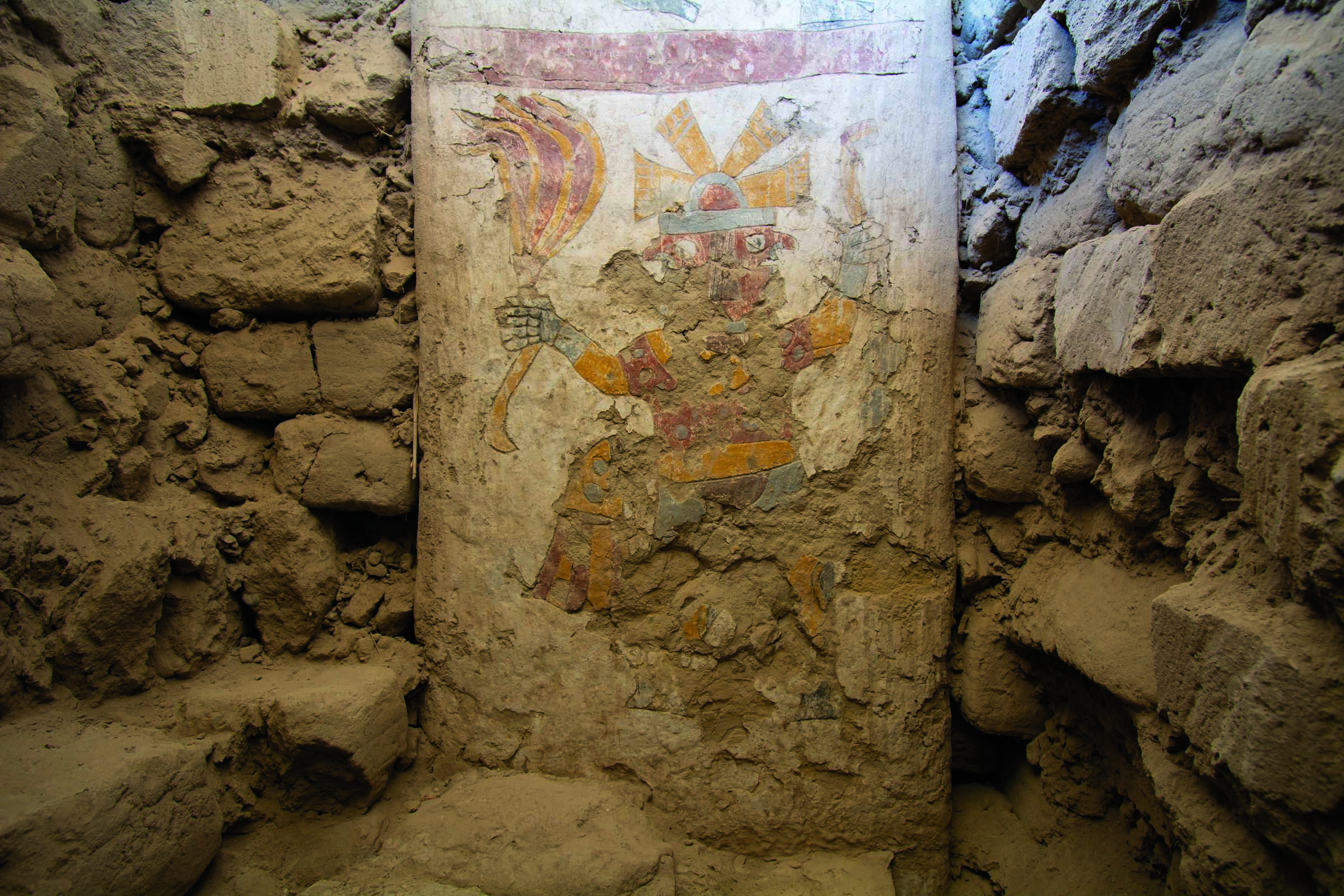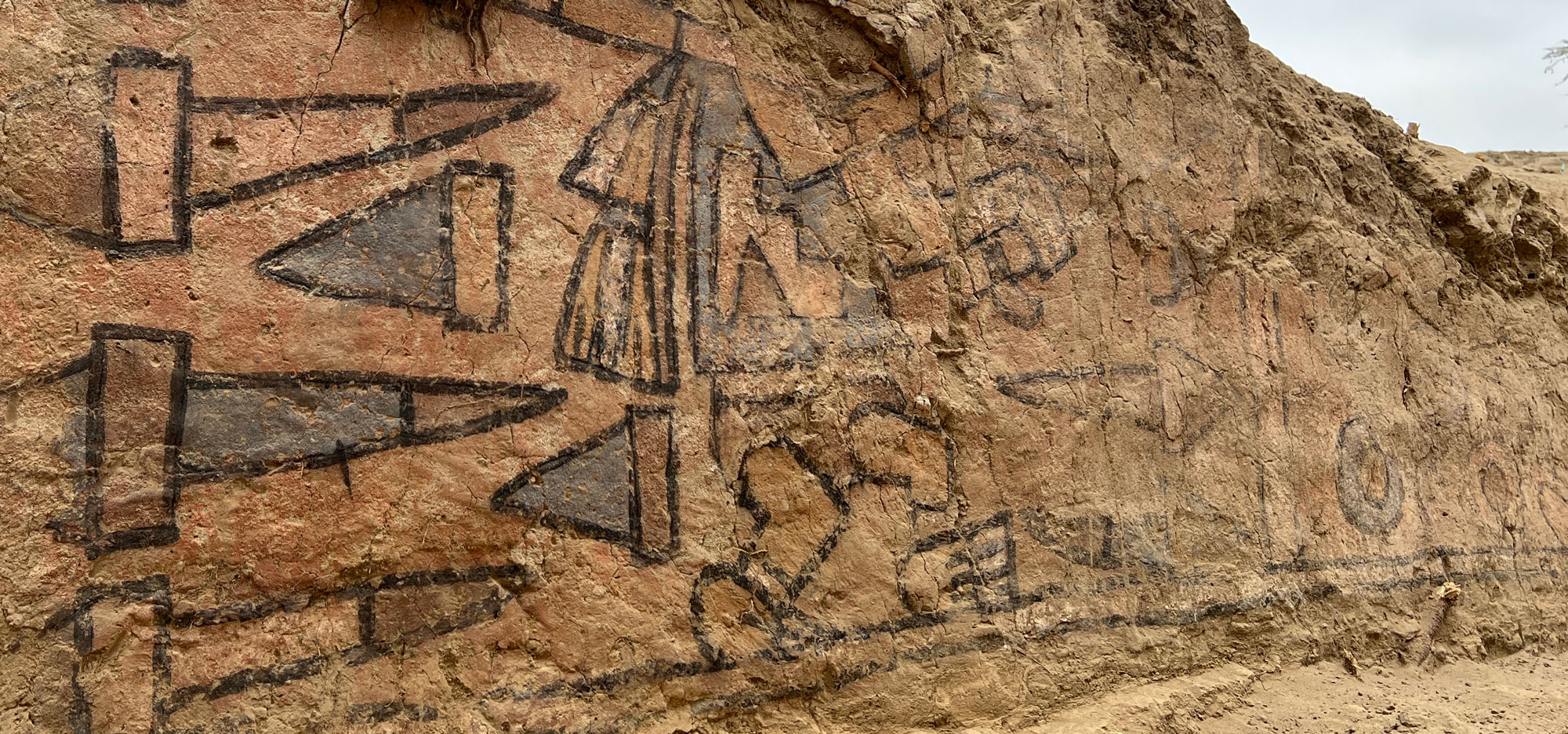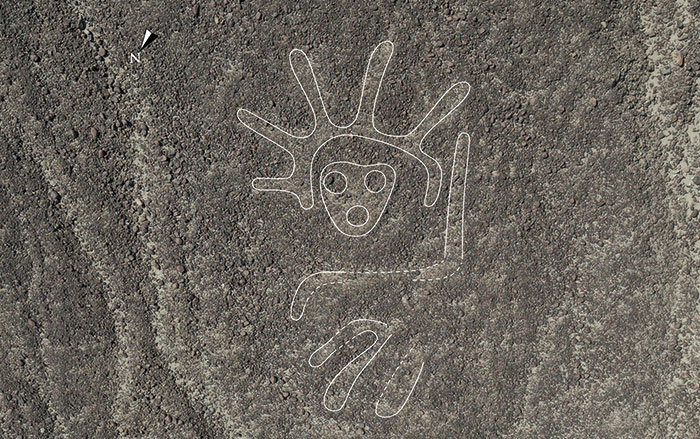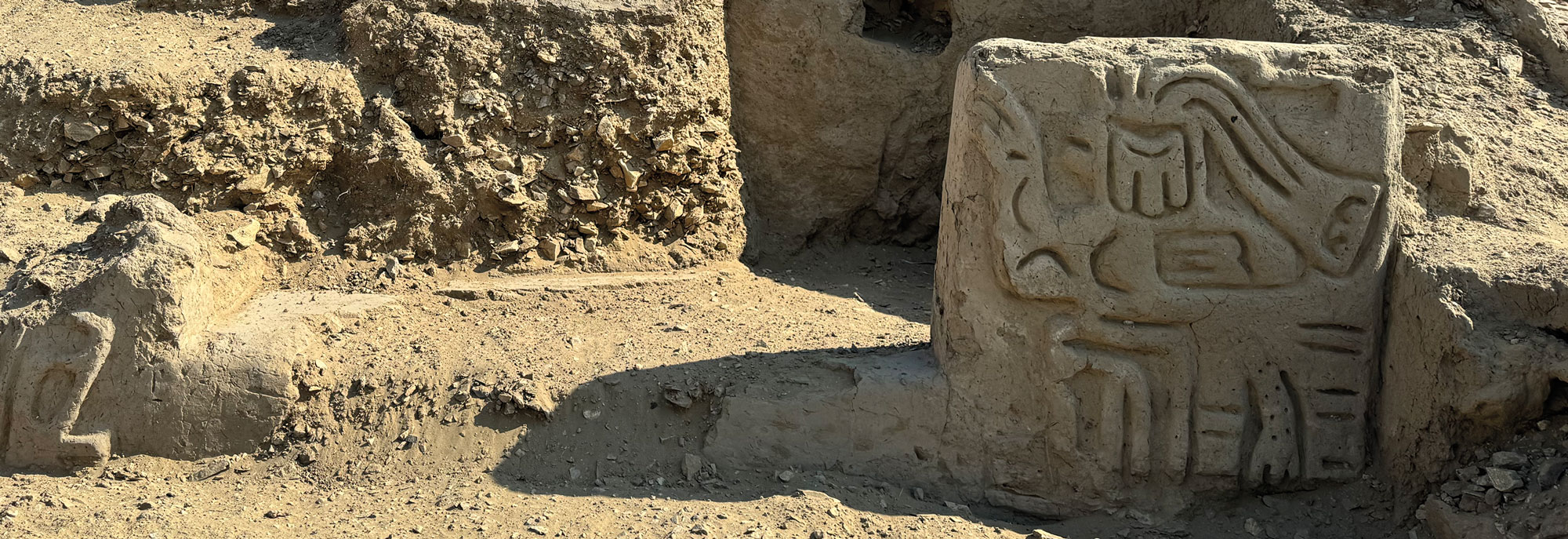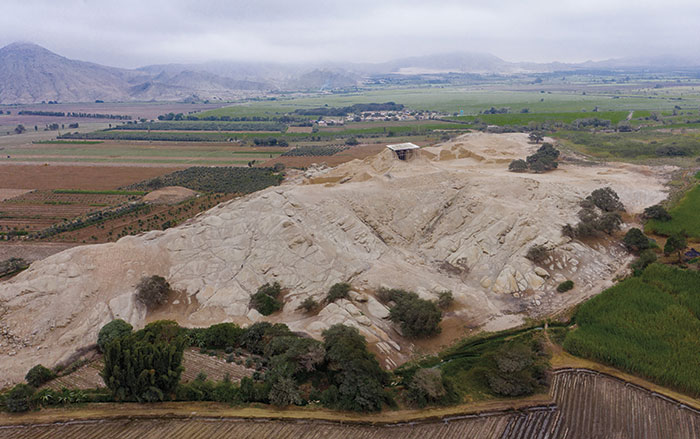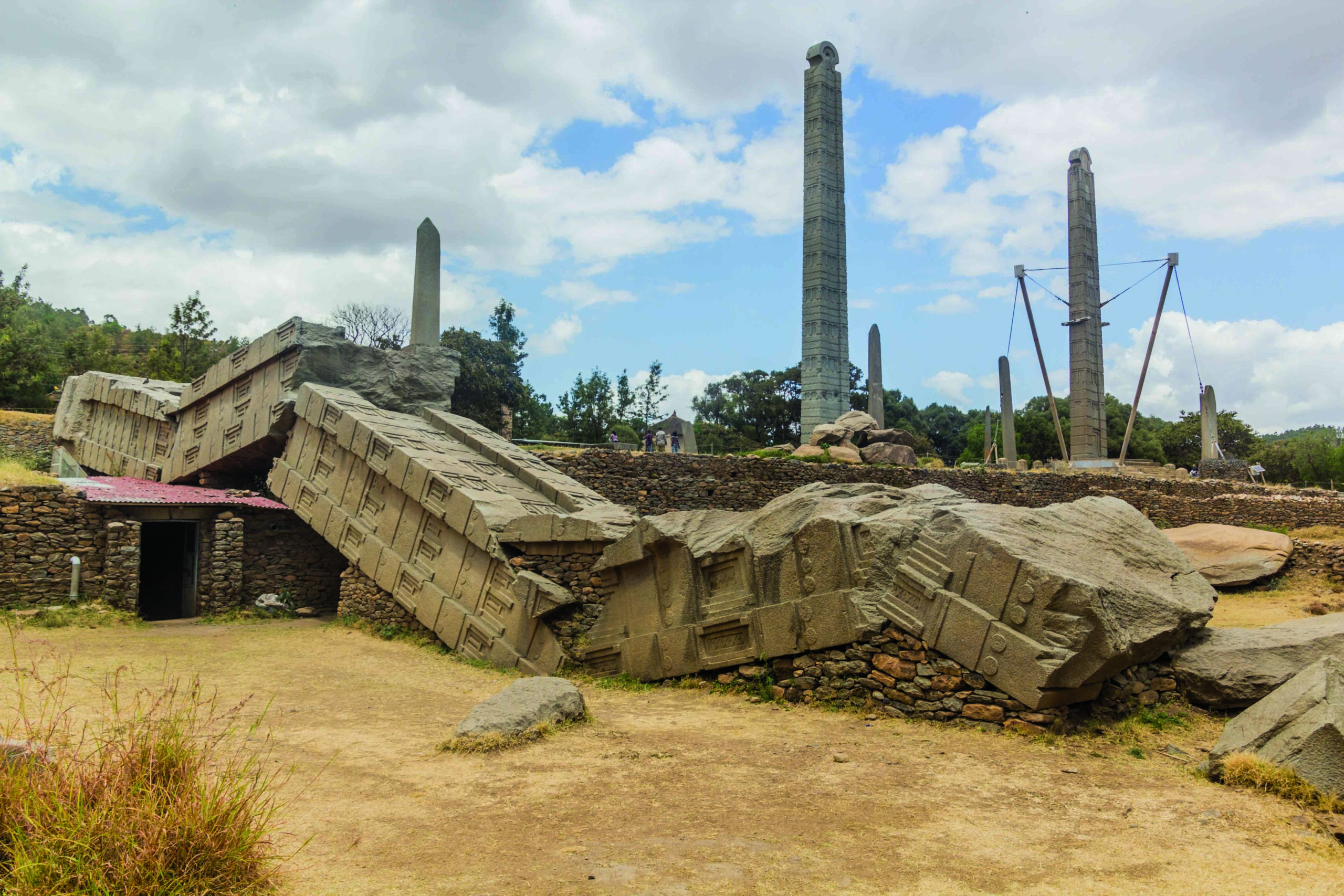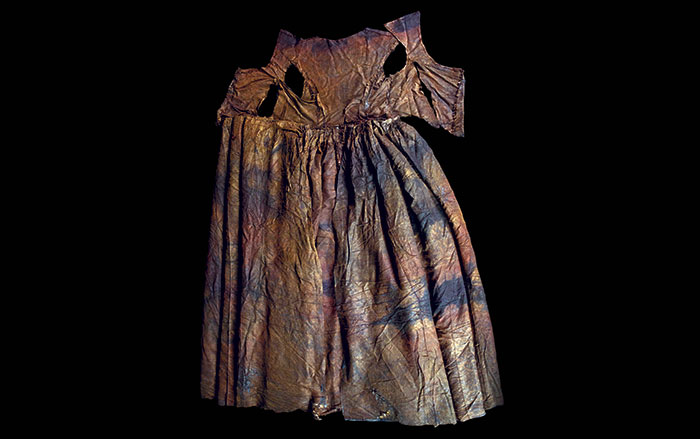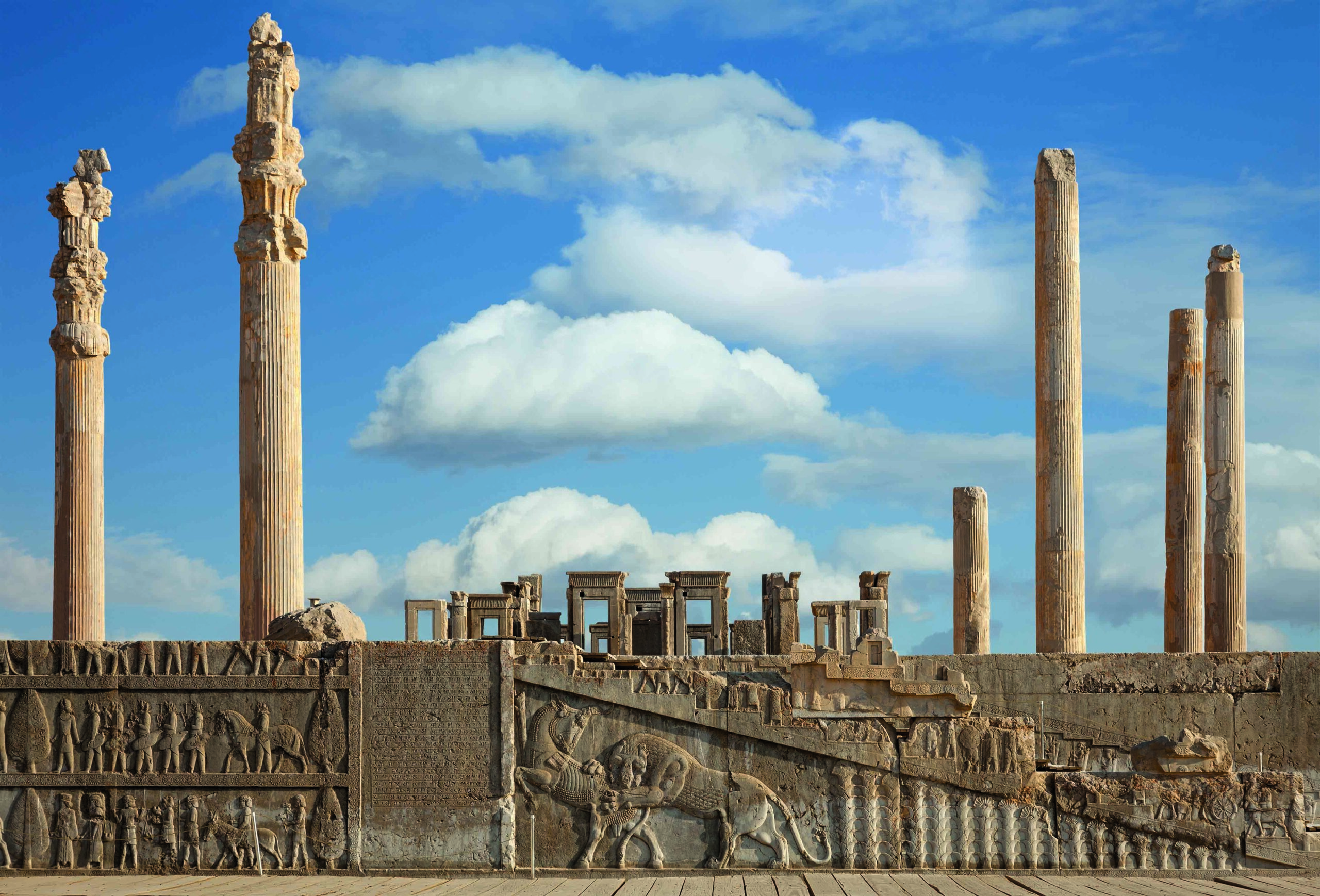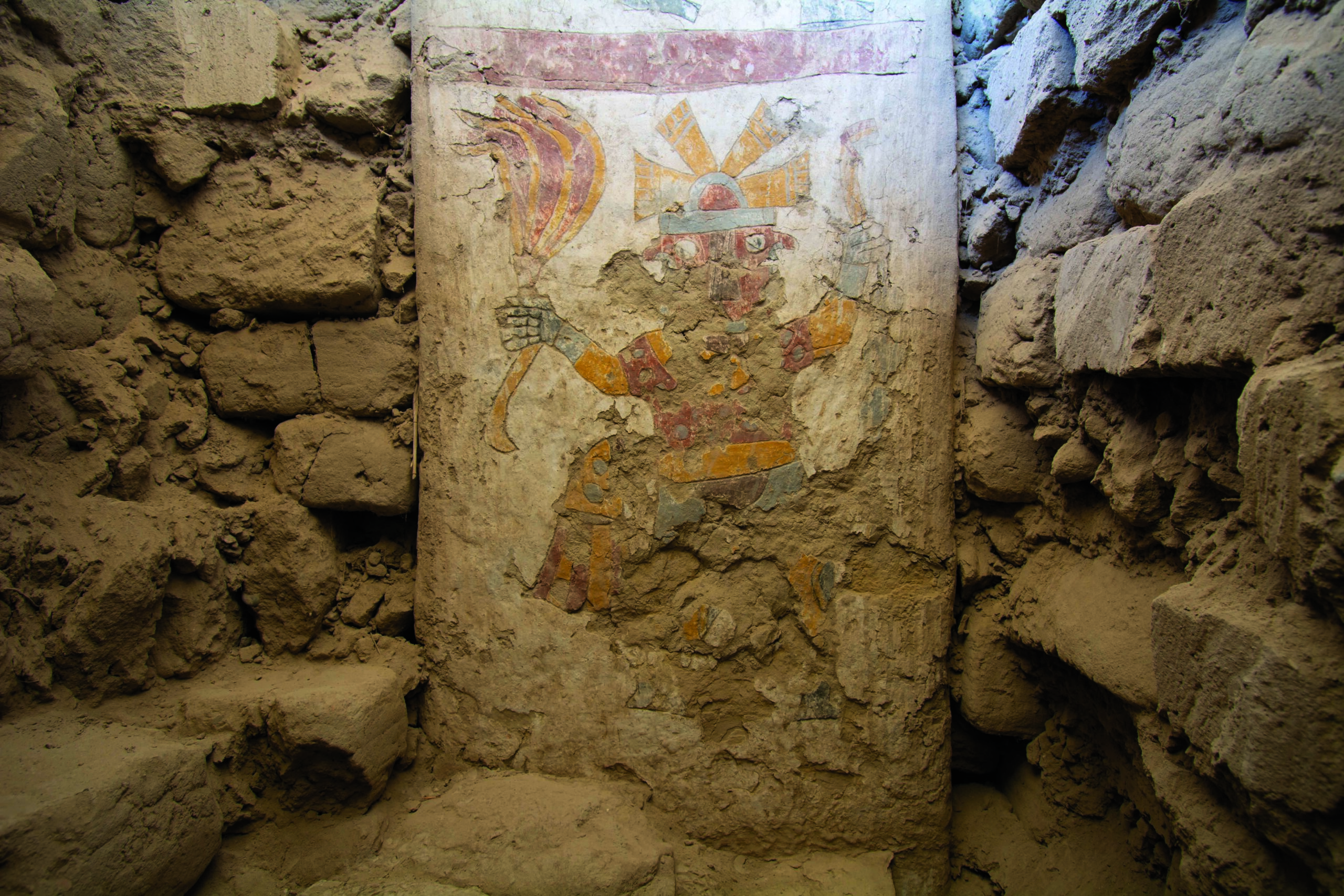
A team led by archaeologist Jessica Ortiz Zevallos has returned to the Temple of the Painted Pillars at the site of Pañamarca in northwestern Peru, where they have discovered new well-preserved, brightly colored paintings. Several of the paintings, which were created by artists belonging to the Moche culture in the seventh century A.D., represent highly unusual figures and scenes. One such image is of a two-faced man who is shown both on the top and the bottom of a pillar. “A person with two faces has never been seen in Moche painting,” says Columbia University archaeologist Lisa Trever. “It’s unique and shows the artists playing with portraying the same person in two different moments.”
Another unusual scene includes the image of a woman who is commonly identified as a priestess based on her clothing and headdress. While she is usually portrayed holding a goblet, in this case the woman grasps an ornate war club. She faces a man who holds an object that may be a khipu, the knotted string implement used by ancient Andean cultures to record numerical information. These scenes are adding to the growing evidence that the Moche should not be thought of as a homogeneous culture, says archaeologist Michele Koons of the Denver Museum of Nature & Science. “There is a flexibility in what it means to be Moche,” she says, “and their expression of their culture was much more diverse than we have thought.”
To read the original article about the Temple of the Painted Pillars in Pañamarca, go to "Painted Worlds."
Video: Aerial View of Pañamarca


